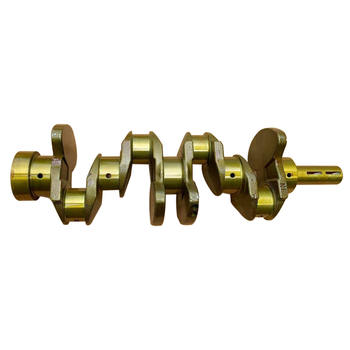Understanding the Crankshaft: A Mechanic's Guide
When it comes to engine components, crankshaft fundamentals are absolutely necessary knowledge for any mechanic. To be honest, the crankshaft is the heart of an engine, converting linear motion into rotational motion. Frankly speaking, without a properly functioning crankshaft, the engine simply won't run.
The Design and Function of Crankshafts
Crankshafts are typically made from cast iron or forged steel for strength and durability. They consist of a main journal, crank pins, and counterweights. The main journal connects to the engine block, while the crank pins connect to the connecting rods and pistons. The counterweights help balance the crankshaft and reduce vibration. In my experience, understanding these components and how they work together is crucial for diagnosing and repairing engine issues.
Common Crankshaft Problems and Solutions
As a mechanic, you'll likely encounter various crankshaft problems throughout your career. Some common issues include worn or damaged bearings, bent or cracked crankshafts, and excessive oil consumption. Worn bearings can often be replaced, but if the crankshaft itself is damaged, it may need to be machined or replaced entirely. Excessive oil consumption can be caused by worn main bearings or improper crankshaft seals, both of which must be addressed to prevent further engine damage.
Crankshaft Maintenance and Inspection
Regular crankshaft maintenance is essential for ensuring optimal engine performance. During routine inspections, check for signs of wear, such as scratches or scoring on the main journals and crank pins. Additionally, inspect the bearings for signs of wear or damage. If you notice any issues, it's important to address them promptly to prevent further damage and potential engine failure.
Choosing the Right Crankshaft for Your Engine
When selecting a crankshaft for an engine rebuild or replacement, there are several factors to consider. First, you'll need to choose the correct material based on the engine's intended use and performance requirements. Cast iron crankshafts are generally more affordable and suitable for stock engines, while forged steel crankshafts offer increased strength and durability for high-performance applications. Additionally, consider the crankshaft's design, including the stroke and rod journal size, to ensure proper engine balance and performance.
Upgrading Your Crankshaft for Improved Performance
Crankshaft Fundamentals: A Recap
In summary, understanding crankshaft fundamentals is essential for any mechanic working on internal combustion engines. From design and function to maintenance and upgrades, having a solid grasp of crankshaft basics will help you diagnose and repair engine issues more efficiently and effectively. So, the next time you're working on an engine, remember these key points about crankshafts and use them to your advantage.
Final Thoughts
As mechanics, we're constantly learning and adapting to new technologies and techniques. By staying up-to-date on crankshaft fundamentals and other engine components, you'll be better equipped to tackle any challenge that comes your way. So, take the time to brush up on your crankshaft knowledge, and you'll be well on your way to becoming a more skilled and confident mechanic.




